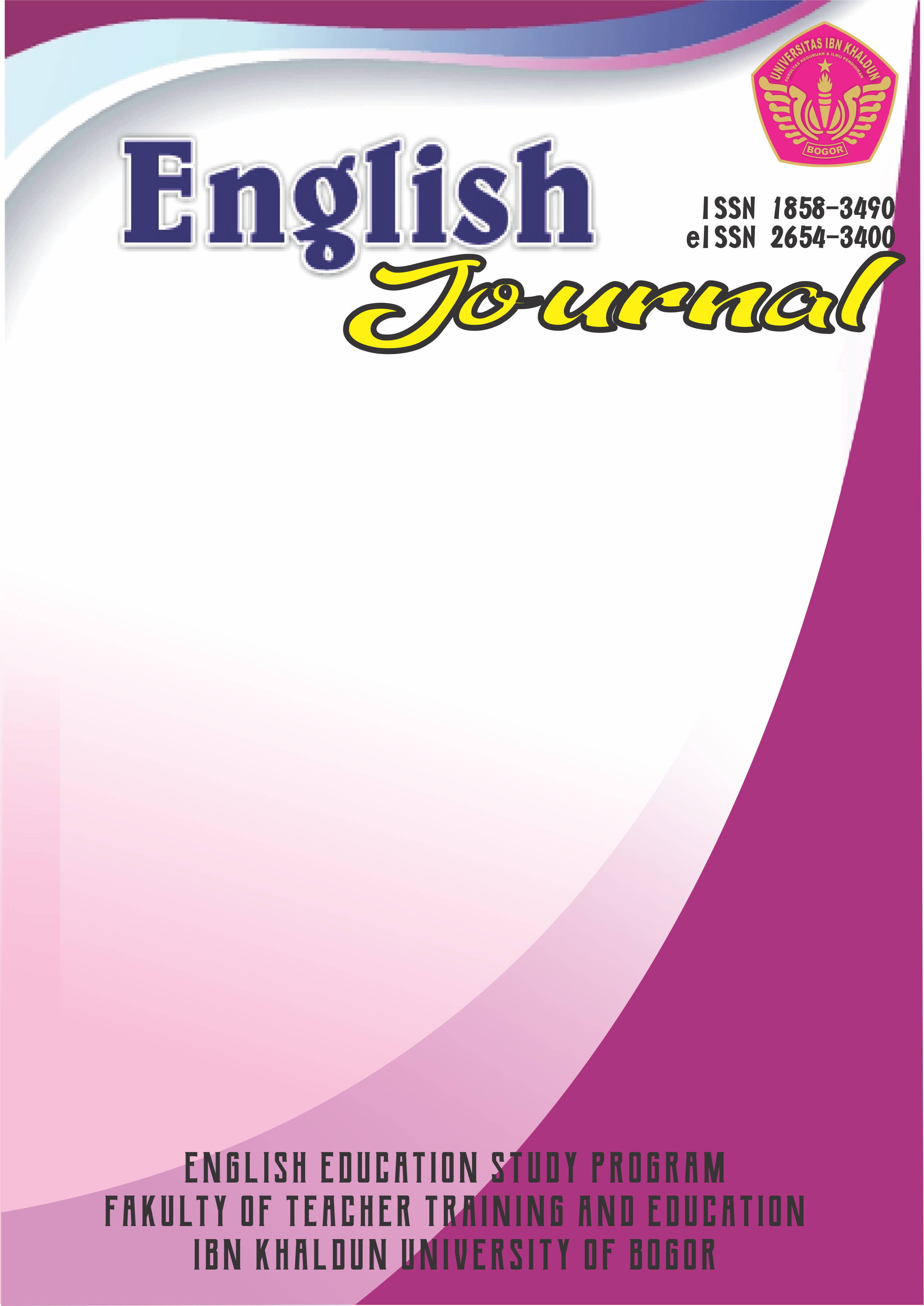EXPLORING THE LOW PROFICIENCY LEVEL STUDENT'S ANXIETY DURING SPEAKING ENGLISH
DOI:
https://doi.org/10.32832/english.v12i2.3826Abstrak
Anxiety is a feeling of frustration, being threatened, apprehension, tension, and worry. Anxiety plays role in affecting especially low proficiency level students in learning English particularly speaking skill. This research is aimed to find out factors that cause low proficiency level students' anxiety during speaking English. This research is designed using descriptive qualitative which involved 10 low speaking proficiency students' at English Department Program Faculty of Teachers Training and Education in a private university in Bogor as participants. The data were gathered through questionnaire and interview. The result shows there are 7 factors that lead low proficiency level students to anxiety during speaking English. Lack of vocabulary takes first place admitted by 52.6% respondents, followed by lack of preparation stated by 50.5% respondent in second place. Third place sit by fear of making mistakes confessed by 49.7% of respondents. Fourth, there are 49.6% of respondents who felt anxious because of their low English proficiency. Fear of being attention is another factor causing 49.6% of respondent anxious. Lack of practice makes 48.5% respondents feeling anxious in speaking. And the last is the students' inability to express ideas resulting 45.0% of respondents anxious because they do not know what to say. The finding also shows that the strategy mostly employed by the low proficiency level students to cope with their anxiety in speaking is having better preparation.Referensi
Ary, D., Jacobs, L.C., & Sorensen, C. (2002). Introduction to research in education (8th Ed.). California: Thomson Wadsworth.
Brown, D. H. (2000). Principle of language learning and teaching (4th Edition). London: Longman.
Brown, D. H (2004). Language Assessment: Principles and classroom practice. New York: Logman
Brown, D. H (2007). First language acquisition principles of language learning and teaching (5th edition). Pearson ESL.
Cameron, L. (2001) Teaching language to young learners. Cambridge: Cambridge University Press.
Harmer, J. (2007) The practice of language teaching. Fourth Edition : London: Longman Group Ltd.
Hui, P. (2009). An investigation of the relationship between students' English learning anxiety and learning achievement in a Chinese senior high school. 1-3.
Na, Z. (2007). A Study of high school students' English learning anxiety. The Asian EFL Journal, 9(3), 22-35.
Nunan, D. (2003). Second language teaching & learning. USA: Heinle & Heinle Publisher.
Nurmayasari, Eva. (2017). Revealing Communication Strategies Emplyed by High Proficiency Level Students. UHAMKA Jakata
Horwitz, E., Horwitz, J., & Cope. (1986). Foreign language classroom anxiety scale. The Modern Language Journal, 70, 202-224.
Horwitz, E. K. And Dolly, J, Young. (1991). Language anxiety: From theory and research to classroom implications. New Jersey: Prentice-Hall Inc.
Kanar, Carol C. The confident student. 7th ed. United States of America: Wadsworth, Cengage Learning, 2011. 291-322.
Kondo, D.S., & Ying Ling, Y. (2004). Strategies for coping with language anxiety: The case of students of English. Japan.ELT Journal, 58(3), 258-265.
Liu, Meihua. (2007). Anxiety in oral English classrooms: a case study in China. Indonesian Journal of English Language Teaching Volume 3(1). pp. 119- 121.

















1.png)




